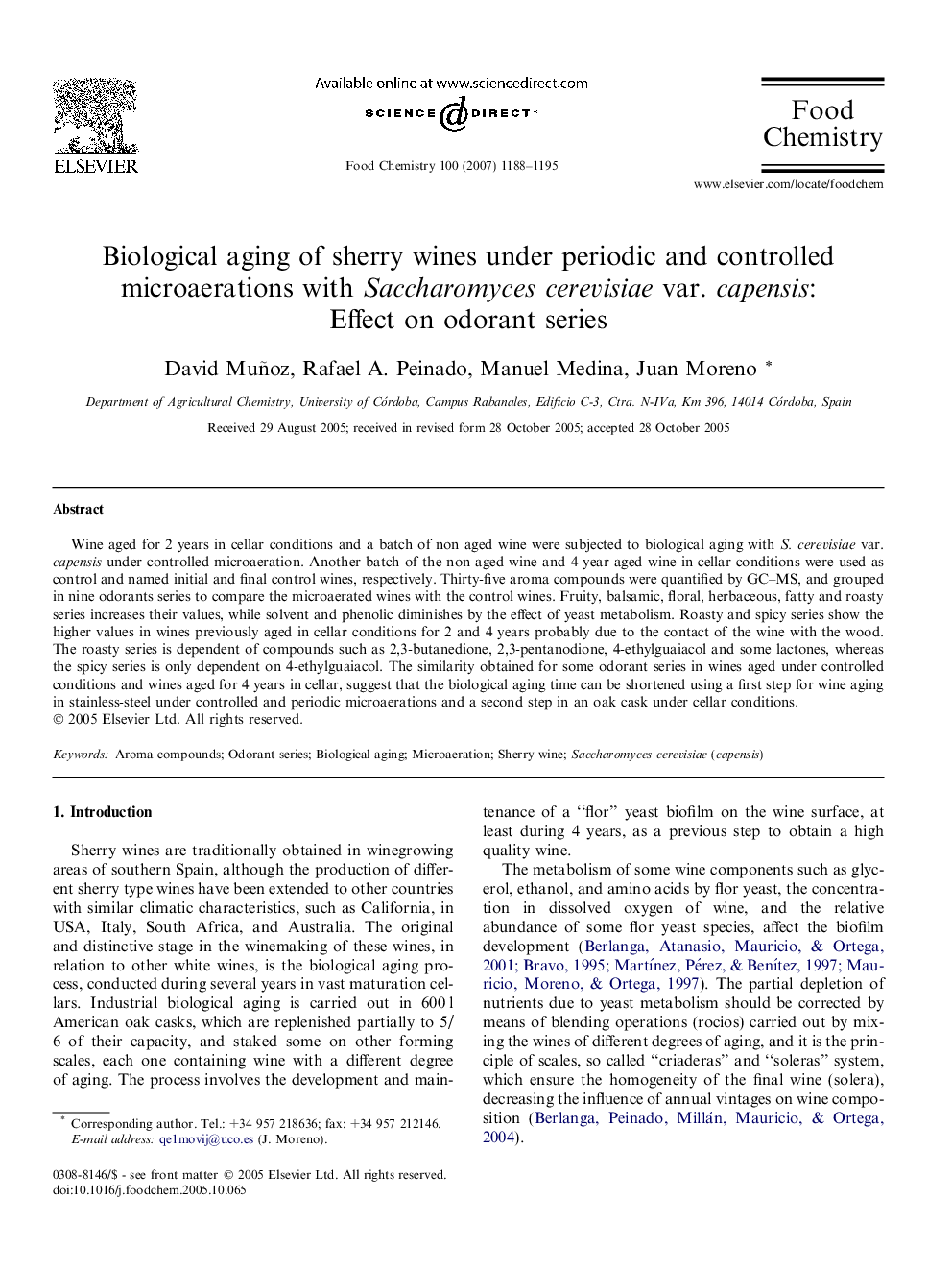| Article ID | Journal | Published Year | Pages | File Type |
|---|---|---|---|---|
| 1190910 | Food Chemistry | 2007 | 8 Pages |
Wine aged for 2 years in cellar conditions and a batch of non aged wine were subjected to biological aging with S. cerevisiae var. capensis under controlled microaeration. Another batch of the non aged wine and 4 year aged wine in cellar conditions were used as control and named initial and final control wines, respectively. Thirty-five aroma compounds were quantified by GC–MS, and grouped in nine odorants series to compare the microaerated wines with the control wines. Fruity, balsamic, floral, herbaceous, fatty and roasty series increases their values, while solvent and phenolic diminishes by the effect of yeast metabolism. Roasty and spicy series show the higher values in wines previously aged in cellar conditions for 2 and 4 years probably due to the contact of the wine with the wood. The roasty series is dependent of compounds such as 2,3-butanedione, 2,3-pentanodione, 4-ethylguaiacol and some lactones, whereas the spicy series is only dependent on 4-ethylguaiacol. The similarity obtained for some odorant series in wines aged under controlled conditions and wines aged for 4 years in cellar, suggest that the biological aging time can be shortened using a first step for wine aging in stainless-steel under controlled and periodic microaerations and a second step in an oak cask under cellar conditions.
